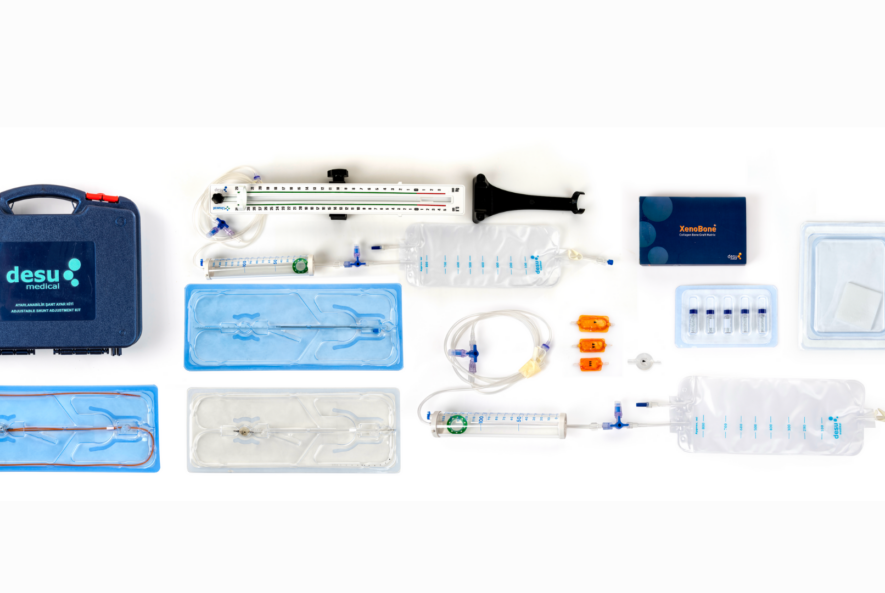
Hydrocephalus, often referred to as “water on the brain,” is a complex neurological condition characterized by the abnormal accumulation of cerebrospinal fluid (CSF) within the brain’s ventricles. This buildup can lead to increased intracranial pressure, causing a range of symptoms, including headaches, nausea, cognitive impairment, and, in severe cases, life-threatening complications.
The condition can affect individuals of all ages, from infants to the elderly, and requires timely and effective management. One of the most common and effective treatments for hydrocephalus is the implantation of a shunt system. Companies like Desu, which specialize in producing adjustable valves and shunts, play a critical role in advancing treatment options for patients worldwide. This article delves into the science behind hydrocephalus, the function of shunts, and the innovative contributions of Desu in this field.
Understanding Hydrocephalus
Hydrocephalus arises from an imbalance between the production and absorption of cerebrospinal fluid (CSF). CSF is a clear, colorless fluid that surrounds the brain and spinal cord, providing cushioning, nutrients, and waste removal. Under normal conditions, CSF is produced in the ventricles of the brain, circulates through the ventricular system, and is absorbed into the bloodstream. However, when this balance is disrupted—due to overproduction, obstruction, or impaired absorption—CSF accumulates, leading to hydrocephalus.
There are two primary types of hydrocephalus:
- Congenital Hydrocephalus: Present at birth, this form is often caused by genetic factors, infections during pregnancy, or developmental abnormalities such as spina bifida.
- Acquired Hydrocephalus: This type develops after birth due to traumatic brain injury, infections (e.g., meningitis), tumors, or hemorrhages (e.g., intraventricular hemorrhage in premature infants).
Symptoms vary depending on age and the progression of the condition. Infants may exhibit an enlarged head, irritability, and developmental delays, while adults may experience headaches, vision problems, and cognitive decline.
The Role of Shunts in Hydrocephalus Treatment
Shunt systems are the cornerstone of hydrocephalus management. A shunt is a medical device designed to divert excess CSF from the brain to another part of the body, where it can be absorbed. The most common type of shunt is the ventriculoperitoneal (VP) shunt, which redirects CSF from the brain’s ventricles to the abdominal cavity.
Components of a Shunt System
A typical shunt system consists of three main components:
- Kateterler: Thin, flexible tubes that transport CSF. The proximal catheter is placed in the brain’s ventricle, while the distal catheter is routed to the absorption site (e.g., abdomen or heart).
- Valve: A critical component that regulates the flow of CSF. Valves can be fixed-pressure or adjustable, with the latter allowing non-invasive adjustments to optimize CSF drainage.
- Reservoir: A chamber that allows clinicians to sample CSF or test shunt function.
How Shunts Work
The shunt system acts as a “plumbing system” for the brain. When intracranial pressure rises, the valve opens, allowing excess CSF to flow through the catheters to the absorption site. This process helps maintain normal pressure levels and prevents brain damage.
Challenges in Shunt Therapy
While shunts are life-saving devices, they are not without challenges. Some of the most common issues include:
- Shunt Malfunction: Blockages, disconnections, or mechanical failures can occur, requiring surgical revision.
- Infection: Shunt systems are foreign bodies, making them susceptible to infections, particularly in the early postoperative period.
- Over- or Under-Drainage: Improper drainage can lead to complications such as subdural hematomas (over-drainage) or persistent symptoms (under-drainage).
These challenges highlight the need for advanced shunt technologies, such as those developed by Desu.
Desu’s Innovations in Shunt Technology
Desu is a leading manufacturer of medical devices, specializing in adjustable valves and shunt systems for hydrocephalus treatment. Their products are designed to address the limitations of traditional shunts, offering improved reliability, precision, and patient outcomes.
Adjustable Valves
Desu’s adjustable valves are a game-changer in hydrocephalus management. Unlike fixed-pressure valves, which require surgical replacement to adjust CSF flow, Desu’s valves can be non-invasively adjusted using a magnetic tool. This feature allows clinicians to fine-tune shunt performance based on the patient’s needs, reducing the risk of complications and the need for additional surgeries.
Key Features of Desu Shunts
- Precision Engineering: Desu’s shunts are designed with high-quality materials to ensure durability and long-term performance.
- Customizable Settings: Adjustable valves offer multiple pressure settings, allowing personalized treatment for each patient.
- Reduced Infection Risk: Desu incorporates antimicrobial technologies to minimize the risk of infections.
- Compatibility with Imaging: Desu’s devices are MRI-compatible, ensuring safe imaging for patients with shunts.
Clinical Benefits
Desu’s shunt systems have been shown to improve patient outcomes by:
- Reducing the frequency of shunt revisions.
- Enhancing quality of life through better symptom control.
- Lowering healthcare costs by minimizing complications and repeat surgeries.
The Future of Hydrocephalus Treatment
Advancements in shunt technology, such as those pioneered by Desu, are transforming the landscape of hydrocephalus treatment. Emerging trends include:
- Smart Shunts: Integration of sensors to monitor intracranial pressure and CSF flow in real-time.
- Biodegradable Materials: Development of temporary shunts that dissolve after the underlying issue is resolved.
- Minimally Invasive Techniques: Use of endoscopic procedures to reduce surgical risks and recovery times.
Desu continues to lead the way in innovation, collaborating with researchers and clinicians to develop next-generation solutions for hydrocephalus.
Hydrocephalus is a challenging condition that requires effective and reliable treatment options. Shunt systems, particularly those with adjustable valves, have revolutionized the management of this condition, offering patients a chance at a better quality of life. Companies like Desu are at the forefront of this field, leveraging cutting-edge technology to address the limitations of traditional shunts and improve patient outcomes. As research and innovation continue to advance, the future holds promise for even more effective and minimally invasive treatments for hydrocephalus.
By understanding the science behind hydrocephalus and the role of shunts, patients, caregivers, and healthcare providers can make informed decisions about treatment options. With the support of companies like Desu, the journey toward better hydrocephalus management is well underway.




